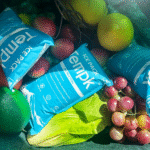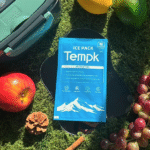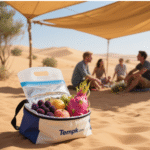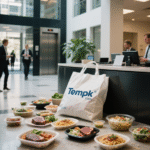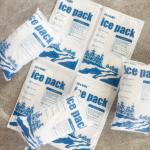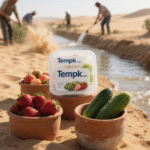How Catering Dry Ice Packs Keep Food Cold and Guests Happy
Catering dry ice packs solve the age old problem of keeping food safe and delicious when refrigerators aren’t available. By sublimating directly from solid carbon dioxide to gas at –78,5 ° C (–109,3 ° F), dry ice packs maintain ultra low temperatures for up to 24–48 heures without leaving messy meltwater. This article explains what catering dry ice packs are, why they’re ideal for events, how to size and handle them safely, and what innovations will shape cold chain logistics in 2025. You’ll see how these packs reduce food waste, support sustainability and even add dramatic flair to your buffet.
What are catering dry ice packs? Learn how sublimation works and why CO₂ packs deliver ultra cold temperatures.
Why choose dry ice packs for catering? Explore benefits like longer cooling duration, dry transport and visual effects.
How much dry ice do you need? Get simple formulas and guidelines for sizing packs based on event type.
How do you pack and handle dry ice safely? Follow step by step instructions and safety precautions.
Quoi de neuf 2025? Discover market trends, capteurs intelligents, hybrid cooling and sustainability initiatives driving the cold chain.
What Are Catering Dry Ice Packs and How Do They Work?
Catering dry ice packs are flexible multi cell blankets filled with high purity solid carbon dioxide. When exposed to ambient air, the CO₂ sublimates directly from a solide à un gaz, absorbing heat without turning into liquid. Because there’s no melting, food stays dry and packaging remains intact. Each cell in the blanket keeps the CO₂ evenly distributed, creating uniform cold across trays or containers. La glace traditionnelle fond à 0 °C, while dry ice holds –78,5 ° C; gel packs generally hover near –21 °C. This extreme cold means dry ice sheets can preserve frozen foods like ice cream, seafood or meat for extended periods rather than merely chilling them.
The Science of Sublimation and Temperature Control
During sublimation, carbon dioxide absorbs latent heat from the surrounding environment, cooling items inside the insulated container. Contrairement aux packs de gel, which thaw gradually and may leak water, dry ice emits CO₂ gas that escapes through vents in the cooler. This absence of liquid water prevents soggy packaging, bacterial growth and label damage. Because sublimation occurs at a constant temperature (–78,5 ° C), the cooling effect is remarkably stable until the ice is gone. Modern dry ice sheets come in various sizes: mini sheets for 24 hour shipments, standard sheets pour 48 hours and large sheets pour jusqu'à 72 heures. The sheet format spreads cold evenly, reducing point contact freezing and making them ideal for delicate pastries or sushi.
Solid CO₂ vs. Gel Based Dry Ice Sheets
Not all “dry ice packs” are the same. Some products contain pure dry ice (co₂ solide); others use super cooled gels or phase change materials but market them as “dry ice sheets.” True CO₂ packs provide intense cooling but can’t be refrozen; once the CO₂ sublimates, there’s nothing left to reuse. By contrast, gel based packs freeze at about –40 °C and are fully refreezable for sur 30 cycles. These gel packs maintain temperatures between –12 °C and –18 °C for up to 48 heures, making them suitable for meal kits that need to stay frozen but not at –78 °C. Choosing between solid CO₂ and gel based packs depends on your product’s sensitivity and the desired temperature range.
Key Differences and What They Mean for You
| Propriété | Paquet de glace sec (co₂ solide) | Gel pack/PCM | Importance pratique |
| Température | –78,5 ° C (–109,3 ° F) | –21 °C to –40 °C | Dry ice keeps items deeply frozen; gel packs keep food chilled but not rock solid. |
| Changement de phase | Sublimates directly to gas | Melts from solid to liquid | Dry ice leaves no puddles; gel packs may leak water and cause sogginess. |
| Durée de refroidissement | 24–48 hours per sheet | 12–24 heures | Dry ice is ideal for multi day events; gel packs suit same day deliveries. |
| Réutilisabilité | Single use (unless CO₂ remains) | Réutilisable 30+ cycles | Gel packs are eco friendly when reused; dry ice must be replenished. |
| Désordre | Pas d'eau de fusion | May leak water and gel | Dry ice eliminates cleanup and protects packaging. |
Practical Tips and Use Cases
Small receptions (3–6 hours) – For shrimp cocktails and cheese boards, plan 0.5–1 lb (0.3–0.5 kg) de glace sèche par 24 heures. Use mini sheets placed around trays and pre chill foods.
Wedding dinners (6–12 heures) – For steaks, seafood platters and desserts, allouer 2–5 lb (1–2 kg) de glace sèche par 24 heures. Combine dry ice sheets with gel packs for salads and desserts.
Outdoor festivals (12–24 heures) – For BBQ meats and ice cream bars, utiliser 5–10 lb (2–5 kg) de glace sèche par 24 heures. Place sheets at the bottom of insulated coolers and layer between trays.
Multi day tours or conferences (24–48 heures) – Plan 10–15 lb (4.5–7 kg) de glace sèche par 24 heures. Use multiple layers of sheets and monitor temperature with sensors.
Exemple du monde réel: A wedding caterer in 2024 used flexible CO₂ sheets and gel packs to transport 200 guests’ meals across state lines. By placing 5 lb of dry ice per cooler and monitoring temperature with IoT sensors, the caterer kept seafood and desserts frozen for 12 heures, reduced waste by 30 %, and created a dramatic fog effect during service.
Why Are Catering Dry Ice Packs Ideal for Events?
Extended Cooling and Moisture Free Transport
Catering dry ice sheets maintain ultra low temperatures and prevent moisture from damaging packaging. Contrairement aux packs de glace ou de gel ordinaires, dry ice sublimates directly into CO₂ gas, leaving no liquid residue. This means your food stays perfectly dry—even delicate pastries and vacuum sealed entrées arrive crisp and intact. Each sheet can cool for 24–48 heures, whereas gel packs often last only 6–12 heures. For long distance deliveries or multi day events, this extra time is invaluable and reduces the need to restock cooling agents mid event.
Cost Efficiency and Sustainability
Although dry ice may seem pricier at first, it reduces spoilage and food waste, offsetting the cost. Dry ice is produced from captured industrial CO₂, turning emissions into a useful product. Flexible sheets conform to trays and coolers, allowing you to use fewer packs than rigid bricks or gel packs while still maintaining the desired temperature. Advanced gel based dry ice packs introduced in 2025 can be reused over 30 cycles and maintain –12 °C to –18 °C for jusqu'à 48 heures, reducing packaging costs by as much as 75 % and eliminating hazardous materials fees associated with shipping solid CO₂.
Reliability and Even Temperature Distribution
La glace carbonique se sublime lentement, providing a consistent low temperature until it’s gone. Multi cell blankets distribute cold evenly across the surface of trays or boxes, preventing warm pockets that could compromise food safety. This reliability gives caterers peace of mind, especially during outdoor events where ambient temperatures fluctuate.
Dramatic Visual Effects
Dry ice doesn’t just keep food cold—it also creates visually stunning fog when exposed to moisture. The fog cascades over serving platters, making seafood displays, chilled desserts and cocktail stations memorable. For weddings, holiday parties or corporate launches, this dramatic element enhances the dining experience and delights guests.
How to Choose the Right Size and Quantity of Dry Ice for Your Event
Determining how much dry ice you need depends on the weight of your food, event duration and insulation quality. Use these guidelines as a starting point:
Weight based ratio – For overnight shipments, utiliser half the weight of your payload in dry ice; pour 48 heures, utiliser equal weight; pour 72 heures, aim for 1.5× the weight.
General formula – For a 24 hour shipment, plan on 5–10 lb (2.3–4,5 kg) de glace sèche; pour 48 heures, utiliser 10–20 lb (4.5–9 kg). Adjust for ambient temperature, container insulation and food density.
Interactive tool suggestion – Embedding a calculateur de glace sec on your website allows users to input meal weight, desired temperature and event duration. The tool outputs recommended dry ice weight and number of sheets, encouraging engagement and reducing guesswork.
Tableau: Dry Ice Weight Guidelines for Catering
| Event type | Example foods | Durée | Recommended dry ice per 24 h | Notes |
| Cocktail reception | Shrimp cocktails, cheese boards | 3–6 hours | 0.5–1 lb | Pre chill food; place mini sheets around trays |
| Wedding dinner | Steaks, seafood platters, desserts | 6–12 heures | 2–5 lb | Combine dry ice with gel packs for salads and desserts |
| Outdoor festival | BBQ meats, ice cream bars | 12–24 heures | 5–10 lb | Layer dry ice at bottom and between trays in insulated coolers |
| Multi day event | Meal prep for tours or conferences | 24–48 heures | 10–15 lb | Use multiple layers; monitor with temperature sensors |
Packing and Handling Best Practices for Caterers
Preparing the Container
Use a well insulated cooler or shipping box. Pre chill the container with gel packs or place it in a freezer for an hour before packing. Better insulation means less dry ice needed.
Layer the bottom. Place a piece of cardboard or corrugated plastic at the bottom to protect containers from direct contact with extreme cold.
Evenly distribute dry ice sheets. Arrange dry ice sheets across the bottom and between layers of food.
Separate food items. Use additional cardboard or foam layers between dry ice and food to control cooling and make unpacking easier.
Remplir les vides. Fill any empty spaces with crumpled paper or reusable foam blocks to slow sublimation and maintain uniform temperature.
Assurer la ventilation. Never seal the cooler completely; dry ice emits CO₂ gas that needs to escape to prevent pressure build up. Vented packaging or a loosely fitting lid is essential.
Manipulation et sécurité
Wear personal protective equipment – Always use insulated gloves, long sleeves and safety goggles when handling dry ice to prevent frostbite. Never touch dry ice with bare hands.
Use tongs or scoops – Move dry ice using tongs or specialized scoops, not bare hands.
Store properly – Keep dry ice in well insulated, vented containers away from living areas. Do not store in glass or airtight containers, which can crack or explode.
Transport safely – Use ventilated vehicles and avoid sealed compartments to prevent CO₂ buildup. Label packages clearly with “Dry Ice” (Et 1845) and weight information.
Éliminer de manière responsable – Allow leftover dry ice to sublimate in a well ventilated outdoor area. Ne jetez jamais de glace sèche dans les éviers, toilets or sealed trash bins.
Train your staff – Educate all employees on safe handling, emergency procedures and CO₂ exposure risks. Conduct regular safety drills.
Regulatory Considerations
Shipping carriers have strict limits on dry ice quantities (souvent 5–10 lb per shipment for consumer deliveries) and require proper labeling. Check your carrier’s regulations before shipping. Some event venues also have rules on dry ice use and disposal; always confirm in advance.
Glace sèche vs. Gel Packs and Other Cooling Options
Both dry ice and gel packs have advantages, and sometimes combining them yields the best results. La glace sèche maintient des températures extrêmement basses, often as low as –109,3 ° F. It lasts longer than gel packs, especially in insulated containers, and leaves no liquid residue. Cependant, it requires special handling and has a lifespan of 12–24 heures per block or sheet in typical shipping conditions. Les packs de gel sont réutilisables, non toxic and come in a range of temperature options; they’re ideal for produce, beverages or shipments to recipients unfamiliar with dry ice. When shipping frozen goods like meats or ice cream, dry ice is usually necessary. For chilled items that must stay between 2 °C et 8 °C, gel packs or phase change materials suffice. Considering matériaux d'emballage, shipping rates, reusability and environmental impact will help you decide the right combination.
2025 Trends and Innovations in Catering Refrigeration
Market Growth and Supply Challenges
The global dry ice market is booming. It was valued at USD 1.54 milliards en 2024 and is projected to grow to USD 1.66 milliards en 2025 et USD 2.73 milliards 2032, un 7.4 % TCAC. Demand is rising for food shipping, vaccine distribution and industrial applications. Cependant, CO₂ supply growth has been only 0.5 % par année, while dry ice consumption increases roughly 5 % annuellement. This mismatch causes price volatility and occasional shortages, with spot prices surging up to 300 % during supply crunches. Manufacturers are responding by building localized production hubs and exploring on site CO₂ capture at food processing plants to reuse CO₂ emissions. Shippers are also diversifying cooling strategies—using phase change materials or improved insulation to stretch each pound of dry ice further.
Sustainability and Alternative Sources
Sustainability is reshaping the cold chain. Dry ice is increasingly produced from bio based CO₂ captured during bioethanol fermentation, creating a circular and lower carbon pathway. In markets like the UK, supply disruptions reveal the risks of depending on a few large producers and highlight the need for diversified CO₂ sources. Companies are adopting eco friendly packaging, using recyclable or biodegradable materials and reducing plastic waste. They’re also switching to renewable CO₂ sources, such as emissions captured from biogas plants. A pharmaceutical company recently cut packaging waste by 60 % et les coûts par 40 % by switching to sustainable dry ice solutions.
Surveillance intelligente, Hybrid Systems and Automation
Technological advances are transforming catering logistics in 2025:
IoT sensors and data loggers – Smart temperature monitoring sends real time alerts when packages deviate from safe conditions. Blockchain and distributed ledger technologies provide transparent temperature history and authenticity.
Hybrid refrigeration – Combining dry ice with phase change materials (PCMS) smooths temperature fluctuations and reduces dry ice usage. Electric and hybrid transport units further cut emissions by reducing diesel reliance.
Ready to use kits and automation – Pre assembled thermal kits include insulated boxes, dry ice sheets and data loggers, simplifying training and reducing packing errors. Robotic systems for packaging and handling increase efficiency and reduce human error.
Enhanced supply chain visibility – AI and predictive analytics help businesses monitor temperature and location, forecast demand and adapt routes. According to cold chain experts, investing in visibility and smart technologies is critical for risk reduction.
Evolving Consumer Preferences and Market Opportunities
Consumers increasingly value sustainability and transparency. They prefer meal kits and catering services that use eco friendly packaging et carbon neutral refrigeration. Plant based foods are booming; the market is projected to reach USD 162 milliards 2030. These products also require robust cold chain support, presenting opportunities for caterers to serve new clientele. Improved distribution networks and larger, modernized storage facilities are being built to handle rising demand, while synthetic refrigerants like HFCs and HCFCs are being phased out. Automation and robotics are becoming staples in cold storage facilities, enabling seamless handling of perishable goods at temperatures as low as –25 °C. Global events and trade policies may disrupt supply routes, so companies need flexible contingency plans.
Questions fréquemment posées
Q1: How long do catering dry ice packs last? Dry ice sheets usually maintain –78.5 °C to –18 °C pour 24–48 heures, and larger sheets can extend up to 72 heures when used in high quality insulated containers. Gel packs offer chilled temperatures for 24–48 heures.
Q2: Can I reuse dry ice sheets? Solid CO₂ sheets are single use because the CO₂ sublimates completely. Some dry ice sheets, cependant, are refillable—simply insert new pellets into the cells. Gel based “dry ice” packs are fully refreezable and can be reused over 30 cycles.
Q3: Are dry ice packs safe to use indoors? Dry ice releases CO₂ gas, qui peut déplacer l'oxygène dans les espaces confinés. Always ensure adequate ventilation and never seal dry ice in airtight containers. For indoor events, use vented coolers and avoid placing dry ice near sleeping or seating areas.
Q4: How do I dispose of dry ice after my event? Allow unused dry ice to sublimate in a well ventilated outdoor area. Do not place dry ice in sinks, toilets or closed trash cans because it can cause pipes to freeze and burst.
Q5: Which foods benefit most from dry ice packs? Dry ice is ideal for frozen meats, fruit de mer, ice cream and desserts that need to stay below freezing. Produce, beverages and prepared meals that require refrigeration (2–8 ° C) can usually rely on gel packs or PCMs.
Résumé
Catering dry ice packs make it easy to deliver safe, appetizing meals without refrigeration. Because dry ice sublimates at –78,5 ° C and produces no moisture, your food stays frozen and your packaging stays dry. Flexible sheets provide 24–48 heures of cooling per pack, and weight based guidelines help you size them correctly. The packs are cost effective and sustainable when you consider reduced waste and the use of captured CO₂. To maximize safety and efficiency, follow best practices—wear PPE, use insulated and vented containers, et former le personnel. New trends in 2025, such as smart sensors, refroidissement hybride, automation and eco friendly materials, will continue to enhance the catering industry.
Plan d'action:
Determine your cooling needs – Estimate food weight, event duration and ambient temperature, then select dry ice sheets accordingly.
Suivre les protocoles de sécurité – Use insulated gloves and vented containers; train staff on proper handling.
Integrate technology – Consider IoT temperature sensors and hybrid systems to optimize performance.
Choose sustainable options – Opt for dry ice produced from renewable CO₂ and recyclable packaging materials.
Rester informé – Keep up with market trends and regulatory changes to ensure compliance and competitiveness.
ABout Rotation
Le tempk est un principal fournisseur de solutions de chaîne du froid, offre packs de glace sec, packs de gel, insulated containers and smart monitoring systems that help businesses maintain product integrity during transport. Notre R&D center develops reusable and eco friendly materials, and we leverage captured CO₂ to reduce our environmental footprint. With decades of experience in food, pharma and biotech logistics, we’re committed to helping you deliver fresh, safe products every time.
Appel à l'action: Ready to streamline your catering logistics? Contact Tempk today for personalized advice on choosing the right dry ice packs and packaging solutions.


















